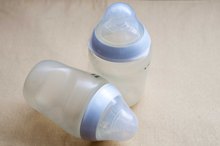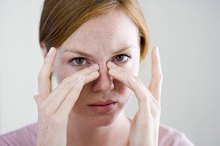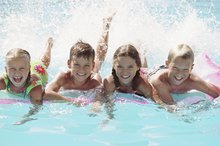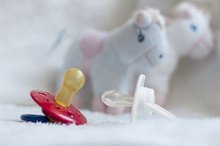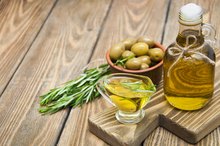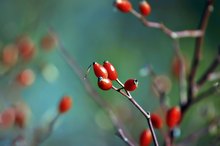How to Clean Bottle Nipples
To keep your baby healthy and free of bacterial infections, it is important to clean her baby bottles, rings and nipples thoroughly. Always sterilize newly purchased bottle nipples before the first use. After the first use, a thorough washing in hot, soapy water should suffice, provided your tap water contains chlorine. The New York State Health Department explains that chlorine sanitizes water, and kills germs and bacteria 1. If you have well water, or if your city does not provide chlorine in your drinking water, you will need to sterilize your baby’s bottle nipples after each washing.
Chlorinated Water
Slip on a pair of rubber dishwashing gloves to protect your hands. Fill a basin with hot water from your tap. The water supply in most cities contains chlorine, which kills germs.
How to Clean Baby Bottles That Have a Milk Odor
Learn More
Add a squirt of liquid dish soap to the hot water. Place the bottle nipples in the hot water and allow them to soak for 10 minutes.
Remove milk from the bottle nipples using a nipple brush. Fill the nipple with the hot, soapy water and squeeze the water through the hole to flush out any trapped milk.
How do I Heat Vicks VapoRub in Water to Relieve Sinus Pressure?
Learn More
Turn the bottle nipples inside out and repeat the cleaning process. Once again, fill the nipples with hot soapy water and squeeze it through the hole to remove milk residue.
Rinse the bottle nipples with warm water, removing all traces of soap residue. Place the bottle nipples in a drain board to dry thoroughly. Store the nipples in a drawer or cabinet when dry.
- Slip on a pair of rubber dishwashing gloves to protect your hands.
- Remove milk from the bottle nipples using a nipple brush.
Non-chlorinated Water
Wash the bottle nipples in hot soapy water. Rinse the bottle nipples to remove the soap residue.
Place the bottle nipples in a pot. Fill the pot with enough water to cover the bottle nipples.
Place the pot on your stovetop. Cover the pot with the matching lid. Turn on the burner.
Bring the pot of water to a boil. Allow the water to boil for approximately 15 minutes. Turn off the burner after the 15-minute boiling period.
Remove the bottle nipples from the water using a pair of tongs. Place the bottle nipples in a drain board to air dry thoroughly. Store the bottle nipples in a drawer or cabinet until needed.
Tips
If you have a dishwasher, place the bottle nipples on the top shelf instead of boiling. The hot water in a dishwasher gets hot enough to provide adequate sterilization.
Warnings
Do not leave the bottle nipples out on the drain board for an extended period of time after drying. Storing the bottle nipples in a clean cabinet or drawer will keep them clean and free of debris in between uses.
Do not store the bottle nipples away until they dry completely. Wet nipples can develop mold growth.
- Wash the bottle nipples in hot soapy water.
- Fill the pot with enough water to cover the bottle nipples.
Related Articles
References
- New York State Department of Health: The Facts About Chlorine
- National Network for Child Care: Guidelines for Bottle Feeding
- McKay M, Coad R. A brother and sister with breast cancer, BRCA2 mutations and bilateral supernumerary nipples. Annals of Translational Medicine. 2017. 5(5):106. doi:10.21037/atm.2017.03.02
- Kliegman R, Stanton B, St. Geme J, and Schor N. Nelson Textbook of Pediatrics. 20th ed. Philadelphia, PA: Elsevier; 2016.
- McKay M, Coad R. A brother and sister with breast cancer, BRCA2 mutations and bilateral supernumerary nipples. Annals of Translational Medicine. 2017. 5(5):106. doi:10.21037/atm.2017.03.02
- National Institutes of Health. Supernumerary Nipple.
Resources
Writer Bio
Jonae Fredericks started writing in 2007. She also has a background as a licensed cosmetologist and certified skin-care specialist. Jonae Fredericks is a certified paraeducator, presently working in the public education system.
